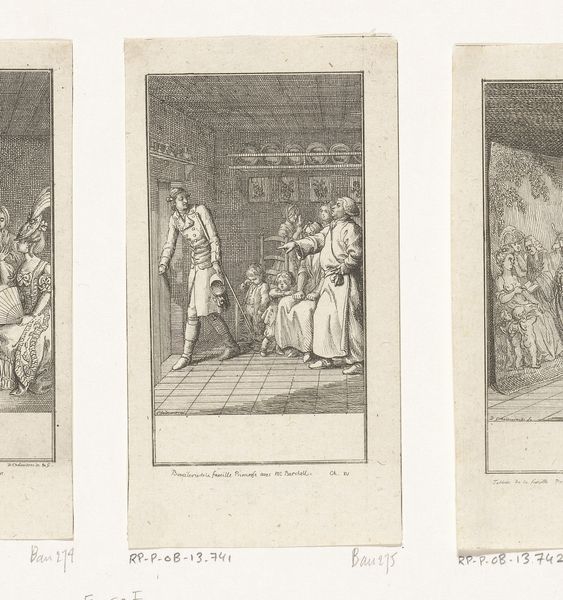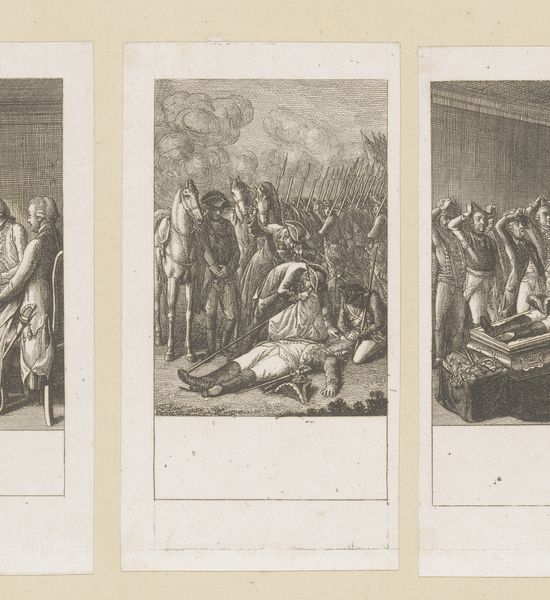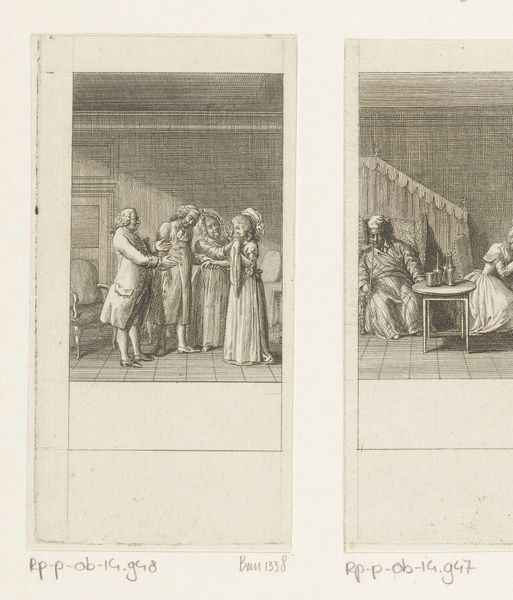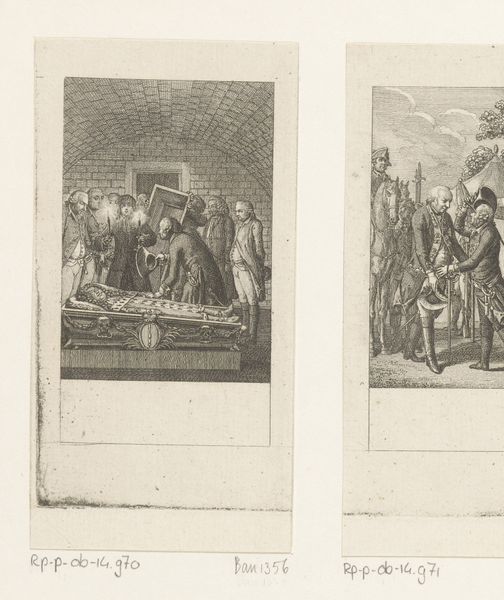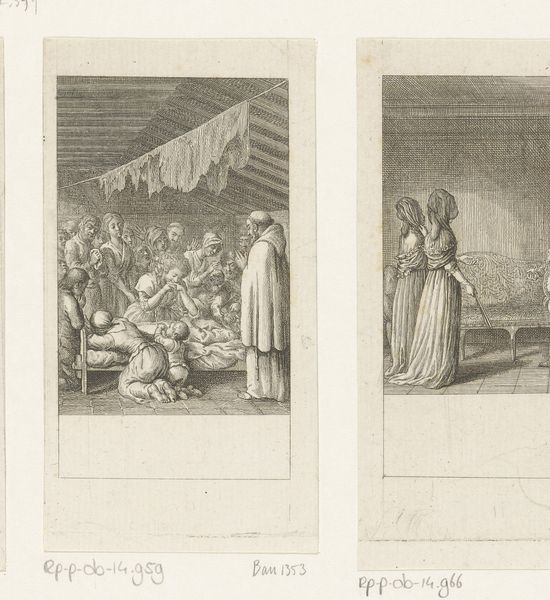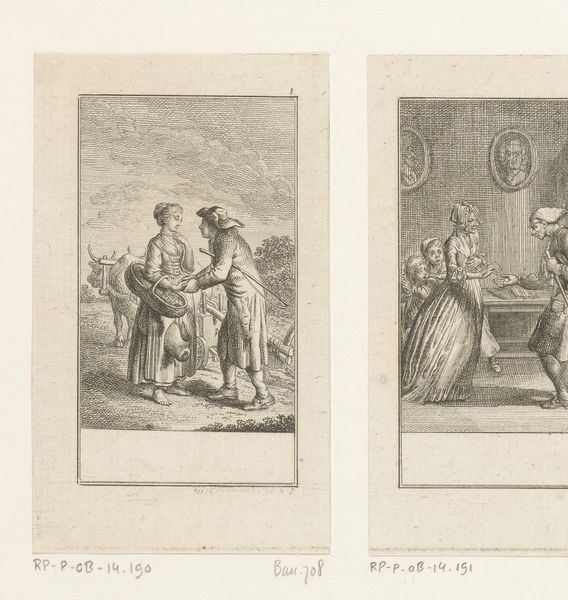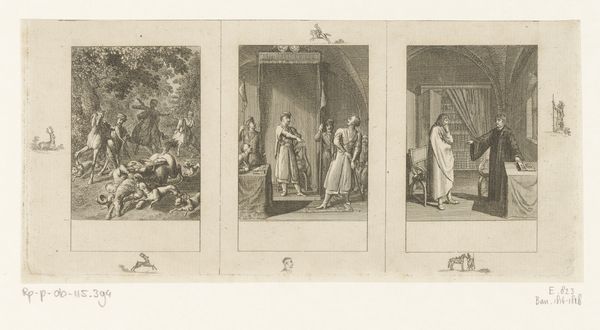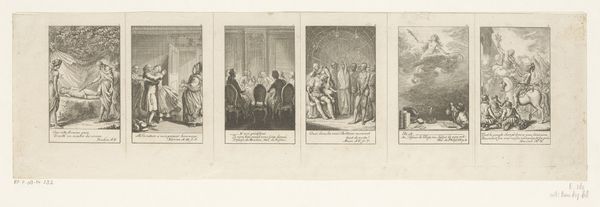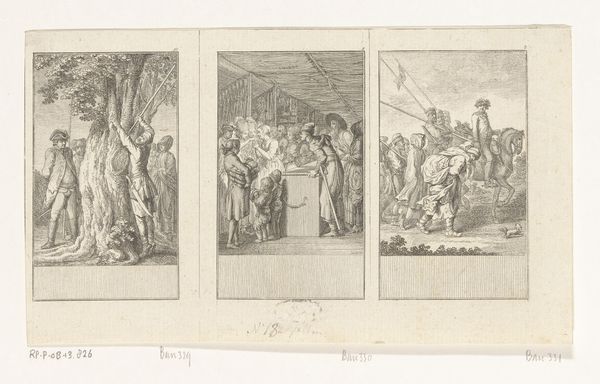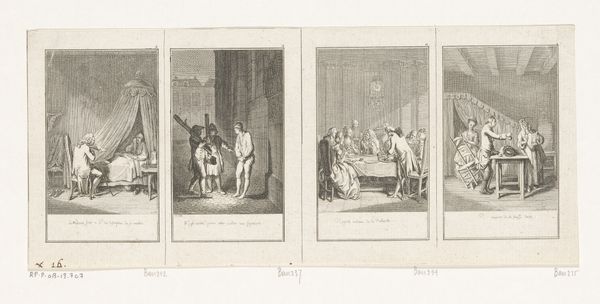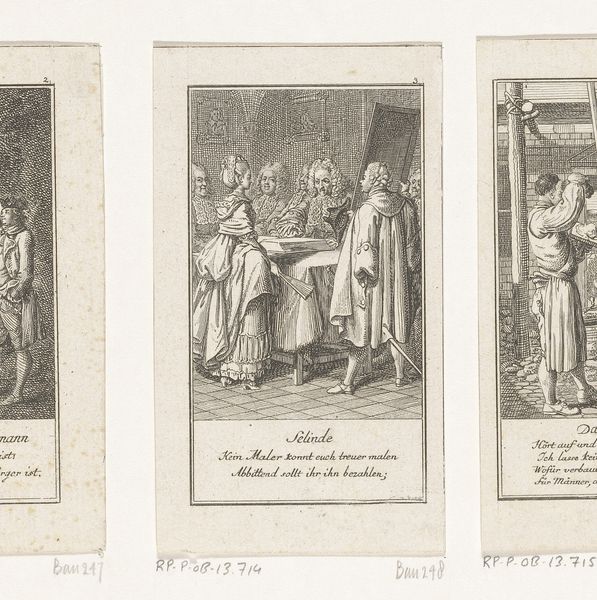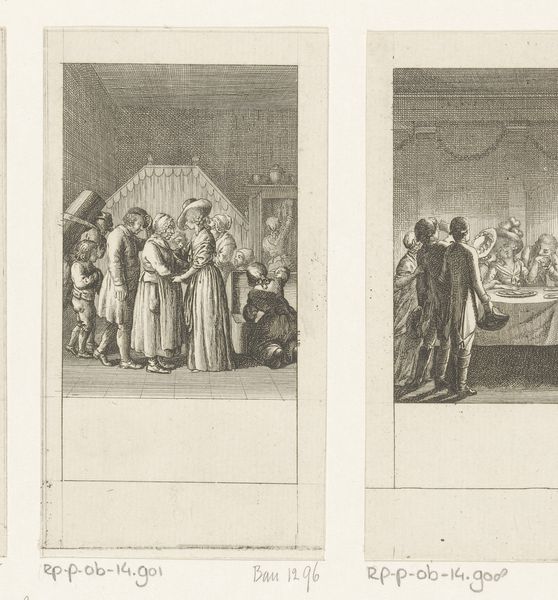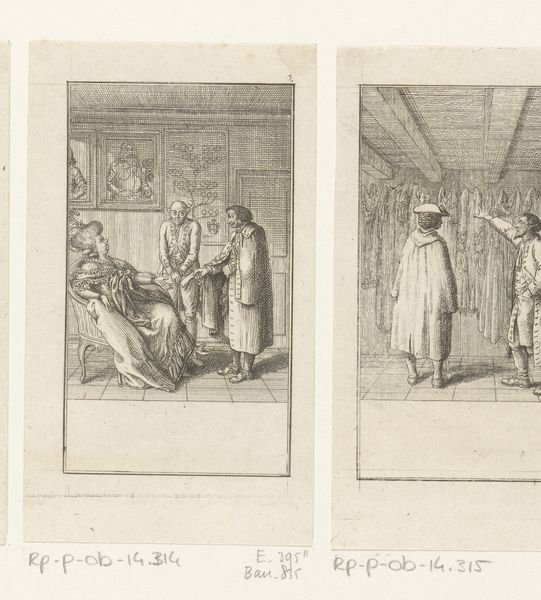
Dimensions: height 117 mm, width 63 mm
Copyright: Rijks Museum: Open Domain
Curator: Here we have “Mannen rond een tafel,” or "Men Around a Table," an 18th-century engraving, currently residing in the Rijksmuseum. It is attributed to an anonymous artist, a fairly typical predicament for prints from this era. Editor: Immediately, I’m struck by its almost stark contrast. It feels austere despite depicting a scene of apparent leisure. The sharp lines of the engraving create a formal, almost cold atmosphere. Curator: Indeed. The image's format, as a print, places it within a tradition of disseminating information and ideas widely, part of a booming industry then. The scene hints at an official meeting; the setting is indoor but quite spartan. The clothing and composure of these figures, clustered around a table set with decanters and food, would speak volumes to contemporary viewers about status, perhaps political engagement. Editor: It does seem deliberately staged. I’m interested in this grouping of men, all of similar dress and bearing, locked in conversation or deliberation. Who were they and what are the power dynamics at play? There are clear class divides in this print, as we see one man serving this all male table. The image reinforces social hierarchy and highlights male privilege. Curator: Well, this brings us to the challenging work of interpreting anonymous historical works. The lack of definitive context leaves the image open to speculation. We might consider the tradition of genre painting during the Baroque, its appeal to middle-class viewers, and the desire to capture aspects of contemporary life, even if idealized. Also, consider where these prints circulate; inns, libraries, print shops – essentially acting as an early form of social media. Editor: Absolutely. This becomes a potent space for constructing identity. The print offered, then as now, the opportunity to reinforce dominant cultural narratives – here, ideas about masculinity, wealth, and governance – even as they open up small fissures of resistance or dissent. One can imagine a lively discussion unfolding about who they are representing in that room and for which narrative means were used to idealize them. Curator: Precisely. The image can act as a touchstone for further conversations regarding Baroque conventions. It is worth considering the power and complexity of historical objects that have evaded simple historical contextualization. Editor: It makes us think critically about how these artworks not only reflected but actively shaped perceptions of gender, class, and social roles in the past. We are all a sum of this history.
Comments
No comments
Be the first to comment and join the conversation on the ultimate creative platform.
